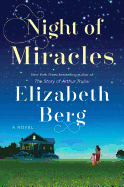
| Publisher: | Random House | |
| Genre: | Women, Family Life, General, Literary, Fiction | |
| ISBN: | 9780525509509 | |
| Pub Date: | November 2018 | |
| Price: | $26 |
| Fiction |
by Elizabeth Berg
Elizabeth Berg returns to tight-knit Mason, Mo., in Night of Miracles, an engaging stand-alone novel that picks up 10 years after The Story of Arthur Truluv. Lucille Howard--Arthur's never-married neighbor--is a vigorous 93-year-old who bakes sweet treats for Polly's Henhouse, a local café. She also teaches baking classes in her home. With all that work, she decides to take on an assistant. In a scene that is both tender and telling, Lucille reluctantly hires Iris Winters, a baking-illiterate transplant from Boston.
Iris, a divorcée, strives to navigate a life riddled with tragedy and loss, but she is not alone. Her neighbor and friend "Tiny" Dawson is a good-natured, hard-working cabbie with weight and self-image issues. He harbors a secret affection for Monica Mayhew, a friendly waitress at the Henhouse, who is insecure thanks to a toxic former romance. Added to the mix are Jason Summers and his wife, Abby, who move in next door to Lucille. A life-threatening health challenge forces the newcomers to ask their kindly neighbor for help in babysitting their precocious 10-year-old son, Lincoln. Lucille and Link form an unlikely bond that transcends their age difference.
The lives of these well-drawn, interconnected characters orbit Lucille--a strong, resilient woman weathered by hard knocks--whose upbeat spirit influences everyone she encounters in the supportive, small-town community. Well-tended story threads braided with bittersweet plot twists enrich the texture and unifying message of this endearing, feel-good story. --Kathleen Gerard, blogger at Reading Between the Lines
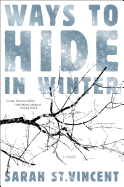
| Publisher: | Melville House | |
| Genre: | Literary, Political, Suspense, Thrillers, Fiction | |
| ISBN: | 9781612197203 | |
| Pub Date: | November 2018 | |
| Price: | $25.99 |
| Starred | Mystery & Thriller |
by Sarah St. Vincent
Kathleen works in a small store at the edge of a state park in Pennsylvania's Blue Ridge Mountains. She was widowed at 22 by a car wreck that left her badly injured, but she insists that she does not have a limp. She wants only to be left alone. But then a stranger appears out of the harsh snow of mountain winter, wearing dress shoes and a disarming expression; his native country is Uzbekistan, and he gives no good reason why he should be lurking out-of-season at the hostel next to Kathleen's store. Despite her instincts, she indulges him with conversation and, eventually, a cautious friendship.
Sarah St. Vincent's first novel, Ways to Hide in Winter, tells the story of these two people, each skittish in their own way, as they avert their eyes from the past. Kathleen keeps her world small: she cares for her grandmother, occasionally visits with an old school friend, warily guards a bad habit or two. The stranger--who has a name, but it's rarely used; Kathleen calls him simply "the stranger"--speaks haltingly of a family and career back home, but there is clearly more that he's not telling.
This is a story of secrets. The stranger confesses to a crime committed back home, but this confession may not be what it seems. As the action of this gripping novel unfolds, then, the mystery of two personal histories races against the present: What will be revealed, and will it be in time to save the protagonists?
Ways to Hide in Winter is an impressive, compelling first novel, with characters that will be missed after its conclusion. --Julia Kastner, librarian and blogger at pagesofjulia

| Publisher: | Little, Brown | |
| Genre: | Humorous, World War I, General, Literary, Fiction, Historical | |
| ISBN: | 9780316524605 | |
| Pub Date: | November 2018 | |
| Price: | $27 |
| Mystery & Thriller |
by Ben Schott
One of the most famous comic duos in literature returns in Jeeves and the King of Clubs. Ben Schott writes his novel in homage to P.G. Wodehouse, creator of the inimitable Bertie Wooster and his gentleman's personal gentleman, Jeeves. In this installment, the British Secret Services asks Bertie and Jeeves to help foil a plot to subvert the English government.
Bertie and Jeeves are recruited to spy on Roderick Spode, an upper-crust fascist. As Bertie says, "Eager to help His Maj in any way I can, so long as it does not impinge too momentously on the social calendar." This assignment sets the stage for multiple plot lines with well-known characters and tropes that fans of Wodehouse expect. Bertie's good Aunt Dahlia needs help with an elaborate money-making scheme. The Drones, his social club, is temporarily closed, forcing a move to a less desirable one. And certain former fiancées, namely Madeline Bassett and Florence Cray, are lurking about--right when Bertie's fascinated with mysterious and clever young Iona MacAuslan. Throughout all this, Jeeves, whose brainpower is second to none, ensures that all will be right in the end.
Wodehouse is known for his metaphors and humorous dialogue, and Schott does not disappoint. Speaking of Spode's ghastly personality, Bertie says, "It's as if evolution took a wrong turn, got stuck in a cul-de-sac, and just threw in the sponge." Jeeves and the King of Clubs is an enjoyable, smile-a-minute escape. Toodle-oo! --Cindy Pauldine, bookseller, the river's end bookstore, Oswego, N.Y.
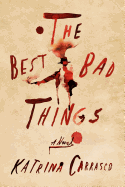
| Publisher: | MCD/FSG | |
| Genre: | Mystery & Detective, Thrillers, Fiction, Historical, Women Sleuths | |
| ISBN: | 9780374123697 | |
| Pub Date: | November 2018 | |
| Price: | $27 |
| Mystery & Thriller |
by Katrina Carrasco
Katrina Carrasco's The Best Bad Things transports readers back to 1887, when a sting set up by Pinkerton agents and police detectives takes down a booming West Coast smuggling ring. "This is going to be the police bust of the decade," notes one detective to another during their investigation. "It's got shanghaiing, girls, opium... Everyone will be watching." Indeed, everyone is watching--including Alma Rosales, a one-time Pinkerton agent who now works for Delphine Beaumond, the mastermind behind the crime ring. Alma goes deep undercover in her preferred role as Jack Camp, a smart-mouthed ruffian who spars as readily with his fists as with his words.
Therein lies the thrill of Carrasco's incredible debut. She has flipped the classic historical detective novel on its head, imbuing it with a sense of feminism and sexuality that never feels out of place for the setting she has chosen. Here identities are as fluid as characters' loyalties, and women in particular exercise their power by stepping either fully into or entirely out of the roles society expects them to play.
The Best Bad Things is a novel that lives in a kind of moral grey area: its characters are neither good nor bad, but simply human--power-hungry, weak, scared, insecure, frustrated, in love, vengeful and flawed though they may be. Carrasco's short, choppy prose perfectly reflects the tension that thrums across every page of the novel, as Alma enters a world of double-crossing, secret identities, violence and lust that would leave even Don Corleone red in the face. --Kerry McHugh, blogger at Entomology of a Bookworm
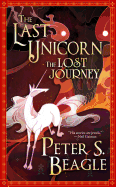
| Publisher: | Tachyon | |
| Genre: | Fairy Tales, Folk Tales, Legends & Mythology, Fantasy, Dragons & Mythical Creatures, Fiction, Action & Adventure | |
| ISBN: | 9781616963088 | |
| Pub Date: | November 2018 | |
| Price: | $21.95 |
| Science Fiction & Fantasy |
by Peter S. Beagle, illust. by Stephanie Law
Everyone knows that "the unicorn lived in a lilac wood, and she lived all alone," and traveled with a magician, became human and loved a prince. Not everyone knows that before Peter S. Beagle reworked his classic fantasy adventure The Last Unicorn, the unicorn's journey followed a different path. Now readers can discover her origins in this 50th-anniversary edition of Beagle's first draft, delicately illustrated by Stephanie Law.
When a worse-for-wear dragon turns up in the lilac wood and answers the unicorn's challenge with tears instead of fire, she learns that the world outside has changed from dusty roads and horses to asphalt and automobiles, magic is fading and her kindred have vanished. Gathering her courage, she sets out to investigate, finding along the way that humanity no longer recognizes her. On the road, she meets a demon called Azazel whose second head, Webster, got them both evicted from the new and improved flame-free Hell on charges of arson. Despite her initial disdain for them, the unicorn finds companionship with talkative Azazel, who counsels her, "You can't live without changing, not anymore" as they move through a modernizing landscape of cities, pollution and endless noise.
Beagle's wistful musings on the vitality and mystery humans trade for modernization have a powerful resonance in our digital age. Last Unicorn fans will recognize earlier versions of favorite scenes, such as the butterfly's appearance. This wisp of a story deserves to be read for its own sake and as a window into its younger sister's heart. --Jaclyn Fulwood, blogger at Infinite Reads

| Publisher: | Thomas Dunne Books | |
| Genre: | Women, Romance, Contemporary, Fiction | |
| ISBN: | 9781250177414 | |
| Pub Date: | December 2018 | |
| Price: | $27.99 |
| Romance |
by Marcia Willett
Prolific author Marcia Willett (Summer on the River, Christmas in Cornwall) returns to the bucolic English countryside in The Songbird. The old Georgian estate Brockscombe Farm consists of a house, owned by the aging Francis Courtney, and three cottages.
In one cottage lives Charlotte, a 32-year-old web designer, her husband, Andy, and their five-month-old. The second cottage is home to William, Andy's father and Francis's cousin. William has been separated for several years from Fiona, Andy's mother. She left him to pursue an affair and a highfalutin architectural career in London, but begins paying regular visits to bond with her new grandson.
William shares his cottage with his other cousin, Kat, a retired ballet dancer in her 60s. She is a creative spirit coming to grips with the death of her Polish lover. And the third cottage is empty until Tim, on sabbatical, arrives to take a six-month lease. Connected to the others through Charlotte's sister, Tim is trying to regroup after a painful break-up. He is also secretly battling a neurological disease in its early stages. The atmosphere in Brockscombe proves as healing as the warm acceptance Tim receives from his new neighbors. But will they treat him differently if they know the truth?
Willett is an elegant writer and an unhurried storyteller. She understands people and the private burdens they carry, while empathizing with the consequences of their actions. This moving, multigenerational saga slowly reveals the essence of her fully realized cast of characters as the intimate stories of their lives unspool with tender, hopeful grace. --Kathleen Gerard, blogger at Reading Between the Lines.
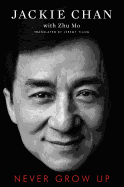
| Publisher: | Gallery Books | |
| Genre: | Biography & Autobiography, Personal Memoirs, General, Entertainment & Performing Arts, Cultural, Ethnic & Regional | |
| ISBN: | 9781982107215 | |
| Pub Date: | December 2018 | |
| Price: | $26 |
| Biography & Memoir |
by Jackie Chan, Zhu Mo, trans. by Jeremy Tiang
Never Grow Up is Jackie Chan's second autobiography, following 1998's I Am Jackie Chan. It begins with the popular Chinese action film star receiving a lifetime achievement Academy Award in 2016 after starring in more than 200 films over five decades. From this vantage point, Chan and co-author Zhu Mo reflect on his life with a desire to offer more than just a collection of humorous anecdotes. With surprising honesty, Chan admits to marital infidelities (one resulting in a child) and his rocky relationship with his wife and son after decades spent putting his career ahead of them.
Although he was nicknamed "Cannonball" (he weighed 12 pounds at birth), Chan began his career in Chinese martial arts film less explosively. He made more than 30 films during his first eight years in the business. When he graduated to leading roles, the industry attempted to mold him into the "new Bruce Lee" with no success. When he convinced producers to add humor and frailties to his characters, he found a winning persona. "After fifteen years of hard training, I was an overnight success," he notes. While he was massively popular in Hong Kong, his first starring role for Hollywood (1980's The Big Brawl) was a flop. It would take 18 more years before he found success in the U.S., with Rush Hour.
Fans will enjoy the behind-the-scenes tales of making films and how Chan's outrageous stunt work escalated with each new movie. But Never Grow Up also reveals Chan's insecurities, infidelities and compulsions. Like Chan's best films, his memoir is engaging and entertaining. --Kevin Howell, independent reviewer and marketing consultant
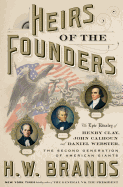
| Publisher: | Doubleday | |
| Genre: | Biography & Autobiography, United States, 19th Century, Political, History, Modern | |
| ISBN: | 9780385542531 | |
| Pub Date: | November 2018 | |
| Price: | $30 |
| History |
by H.W. Brands
While the first generation of Founding Fathers are well represented in American history, the leaders who immediately followed them often receive less attention. In Heirs of the Founders, Pulitzer Prize finalist H.W. Brands (Traitor to His Class) elevates several pivotal members of that second generation: Henry Clay ("the Great Compromiser"), John Calhoun and Daniel Webster.
Brands focuses on the interplay among these three titans during the period between the War of 1812 and the Compromise of 1850. The men rarely agreed completely, but oftentimes two would find alignment, even as the political philosophies and causes they supported changed over time. For example, Calhoun has a reputation for his staunch support of secessionism, while Clay and Webster aligned with the Union cause. However, early on, Calhoun and Clay championed the nation against Webster's Federalist party, and its machinations toward secession during the War of 1812. Not until the secession crisis of the early 1830s did the more familiar Clay/Webster vs. Calhoun paradigm emerge, when a rearrangement of presidential aspirations came into play.
To provide this more defined picture of Clay, Calhoun and Webster, Brands draws primarily from their Senate and House speeches, and includes some addresses in their entirety. Reporting of Congressional speeches was haphazard at the time, making Brands's research and presentation in Heirs of the Founders especially insightful for both the casual reader and professional historian. --William H. Firman Jr., presidential historian and writer

| Publisher: | Nation Books | |
| Genre: | Women in Politics, Gender Studies, Political Ideologies, Radicalism, General, Women's Studies, Social Science, Essays, Political Science, Communism, Post-Communism & Socialism | |
| ISBN: | 9781568588902 | |
| Pub Date: | November 2018 | |
| Price: | $22 |
| Political Science |
by Kristen R. Ghodsee
Although it would have killed some of the fun, Why Women Have Better Sex Under Socialism: And Other Arguments for Economic Independence could have gone by the title Socialism for Dummies. In her introduction, Kristen R. Ghodsee, a professor of Russian and East European studies who has written only scholarly books until now, observes that "the collapse of state socialism in 1989 created a perfect laboratory to investigate the effects of capitalism on women's lives." In six sharp essay-like chapters, she compares her findings with what she's learned of women's experiences under socialism. Each begins with a personal jumping-off point that helps her stay true to her stated ambition to write an accessible book for a general readership.
Ghodsee is clear that she's no advocate of some forms of socialism such as Stalinism, but she's fascinated by the notion that women's equality was a basic tenet of socialism since its inception in the early 1800s. She notes that the system's boons to women--having a place in the workforce, government-sponsored child care--rebuke capitalism, whose success depends on women minding the kids--work that's "invisible as far as the market is concerned."
As for that titillating title: Ghodsee's point is that when women are financially independent, they can pursue relationships strictly for pleasure instead of being obliged to seek out husband material. Too hypothetical for you? Leave it to Ghodsee to furnish studies that compare the quality of sex for women in post-Cold War East Germany and West Germany. --Nell Beram, author and freelance writer

| Publisher: | Houghton Mifflin Harcourt | |
| Genre: | Biography & Autobiography, Movements, Literary Criticism, Religion, European, Humanism, Philosophy, Theory & Social Aspects, French, Education, Judaism, General, Social Activists, Philosophy | |
| ISBN: | 9781328802699 | |
| Pub Date: | November 2018 | |
| Price: | $26 |
| Starred | Religion |
by Ariel Burger
Before he taught others, Rabbi Ariel Burger was the student of Holocaust survivor, Nobel laureate, author and activist Elie Wiesel. One of the lessons Burger cherishes from his mentor and friend deals with moral education. He explains, "people are morally ignited less by the cognitive processing of learning information than by visceral experience... moments of gooseflesh, chills up the spine, the welling up of tears." Burger knows it is through this style of learning that a student becomes what Wiesel called a "witness," no matter how far removed they are from an event or experience. To ensure his readers become witnesses themselves, Burger approaches his memoir, Witness: Lessons from Elie Wiesel's Classroom, with that education on full display.
Burger's relationship with Wiesel extends beyond a single course at Boston University. Over decades they develop a special bond as Burger transitions from student to teaching assistant, from bachelor to husband and father and, of course, ultimately, to witness. Readers intimately experience Wiesel's classroom, compassion and renowned wisdom through the perspective of a spiritually ambitious young man coming of age under the guidance and watchful eye of this extraordinary adviser.
Wiesel's words and actions are sure to inspire and awe, while Burger's beautifully articulate storytelling skills offer the goosebumps, chills and tears. He narrates the book in present tense, putting the audience in his shoes, looking through his lenses. Thus, given a front row seat to the master's teaching and the pupil's education, readers can feel the warmth and hope that ignites a true witness. --Jen Forbus, freelancer
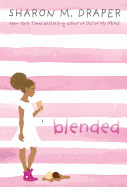
| Publisher: | Caitlyn Dlouhy/Atheneum | |
| Genre: | Emotions & Feelings, Family, Marriage & Divorce, Social Themes, Blended Families, Juvenile Fiction, Prejudice & Racism | |
| ISBN: | 9781442495005 | |
| Pub Date: | October 2018 | |
| Price: | $16.99 |
| Starred | Children's & Young Adult |
by Sharon M. Draper
Coretta Scott King Award recipient Sharon M. Draper (Out of My Mind, Stella by Starlight, Panic) offers a timely middle-grade novel that addresses divorce, racism and identity in her trademark empathic and accessible style.
Isabella is an exceptional pianist, has two best friends, is obsessed with making glitter slime, and has loving, supportive parents. Unfortunately, when Isabella was eight, her parents divorced. The adjustment was challenging, but now Izzy is 11, and things have gotten rougher. Her dad, who had been living in California, moved back to Ohio last year and the court has ordered that she spend alternating weeks with each parent. Her parents are fighting more than ever and the tension is unbearable, especially when both make plans to marry their new partners on the same day.
Underneath the stress of feuding parents is Izzy's dawning awareness that having a black father and a white mother brings an array of complications. "Do you think people think I'm black or white when they see me? Am I black? Or white?" she asks her father. He replies, koan-like, "Yes." And when her black friend Imani finds a noose in her locker after a classroom discussion about lynching, the issue is suddenly even more immediate.
Blended is a graceful novel about family and identity that will enlighten and entertain readers. Draper's insight into the world of an 11-year-old girl is uncanny. Izzy is by turns silly and bewildered, anxious and confident. But when a racial incident even more shocking than the noose throws her life into the media "horror story of the day," Izzy's family finally pulls together like a Beethoven sonata: "White keys./ Black keys./ Blended perfectly." --Emilie Coulter, freelance writer and editor
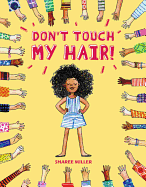
| Publisher: | Little, Brown | |
| Genre: | Emotions & Feelings, People & Places, Humorous Stories, Manners & Etiquette, United States - African-American, Social Themes, Girls & Women, Juvenile Fiction, Strangers | |
| ISBN: | 9780316562584 | |
| Pub Date: | November 2018 | |
| Price: | $17.99 |
| Children's & Young Adult |
by Sharee Miller
The top of a girl's head and her thick, beautiful 'fro take up the first two pages of Sharee Miller's Don't Touch My Hair! Using watercolors, colored pencils and ink, Miller (Princess Hair) creates the soft, brown curves of the little girl's face and the sharp, black squiggles of her curls: "I'm Aria, and this is my hair." Aria joyously shows the reader the versatility of her hair--"I love it up or down. Styled or wild, I don't care!"--and expresses her desire to let it "just... be free." But that small goal is nearly impossible because people always want to express their admiration for her hair by touching it.
What follows is an adventure in avoidance. Aria somersaults through a border of reaching, multi-toned hands, swims through oceans, journeys through jungles and even meets aliens in outer space before finally finding a deserted island where she can escape curious hands. Unfortunately, deserted islands are "lonely," and she decides to go back home--where there's nowhere to run or hide. When she's finally had "enough," Aria firmly tells a crowd of onlookers, "DON'T TOUCH MY HAIR!" She explains, "This is MY hair. It's great that you love it.... But please, just look and don't touch without my permission."
An author's note gives more background to Miller's story: "Many people... feel uncomfortable or disrespected when others touch their hair without permission. Though Aria struggles specifically with people touching her hair... this is also a story about personal boundaries." Don't Touch My Hair! is a bold, straightforward reminder of the importance in affirming children have the right to say no. --Breanna J. McDaniel, author, freelance reviewer
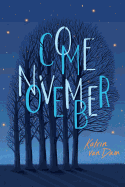
| Publisher: | Scholastic Press | |
| Genre: | Mental Illness, General (see also headings under Social Themes), Family, Social Themes, Young Adult Fiction, Religion & Faith | |
| ISBN: | 9781338268423 | |
| Pub Date: | October 2018 | |
| Price: | $18.99 |
| Children's & Young Adult |
by Katrin van Dam
When Rooney was nine years old and her little brother, Daniel, was a baby, her parents divorced. Nine years later, Rooney has an all-too-clear understanding of why her parents split up: Mom (Anneliese) is a member of the Next World Society, a group of people who believe that on November 17, they will Depart Earth and travel to an alien planet unaffected by climate change.
It's Rooney's senior year and she's supposed to be editor of the school newspaper--she loves writing and she's hoping to build a strong enough résumé to get her into Columbia University. But Anneliese, who refused to stop talking about the Next World at work, just got fired. Angry, Rooney asks her mom how they will feed themselves and pay rent. Anneliese responds, "I know it's hard for you to accept, but none of those things matter anymore." Rooney quits the paper, ups her hours at her coffee shop gig and reaches out to her recently remarried and seemingly absent dad, asking if he can help out "just until November is over." She (naively, of course) believes it'll get better once the 17th of November passes and no one has Departed. As the months count down, Rooney's relationships morph: her bond with brother Daniel disintegrates as he begins believing in Departure; her friendship with bestie Mercer develops into a romance; and she grows closer to her dad and his new wife.
Rooney is a wholly teenaged narrator who learns--over and over again--that everyone is complicated and no one is infallible. Katrin van Dam's debut is a nuanced work for young adults that delves into family dynamics and their imperfect, extremely human emotional responses. --Siân Gaetano, children's and YA editor, Shelf Awareness